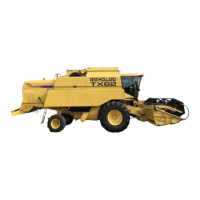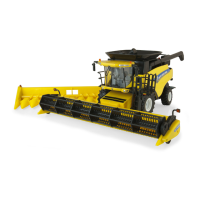SECTION 5
5-55
HYDRAULIC SYSTEM
HYDRAULIC HOSE REPLACEMENT
Hydraulic hoses are an important safety element in
modern machinery. However, hose characteristics
alter under pressure, thermal and UV light load over
the years. Therefore, most hoses now have a pro-
duction date printed on the metal clamp bushing
which allows to determine the age.
Legislation in certain countries and good practice re-
quire that hydraulic hoses are replaced when they
become 6 years old.
CAUTION:
S Escaping fluid under pressure can
penetrate the skin causing serious in-
jury.
Avoid the hazard by relieving pres-
sure before disconnecting hydraulic
or other lines. Tighten all connections
before applying pressure. Search for
leaks with a piece of cardboard. Pro-
tect hands and body from high pres-
sure fluids.
If an accident occurs, call for a doctor
immediately. Any fluid injected into
the skin must be surgically removed
within a few hours. If not, gangrene
may result. Doctors unfamiliar with
this type of injury should reference a
knowledgeable medical source.
S Flexible hose assemblies must not be
constructed from hoses which have
been previously used as part of a
hose assembly.
S Do not weld to the piping.
S If flexible hoses or piping are dam-
aged, replace them immediately.
S It is forbidden to modify an accumula-
tor by machining, welding or any
other means.
S Before removing accumulators for
servicing, the liquid pressure in the
accumulator must be reduced to zero.
S Pressure check on accumulators
must be carried out by the method
recommended by the accumulator
manufacturer . Care must be taken not
to exceed the maximum allowable
pressure of the accumulator .
After any check of adjustment there
shall be no leakage of gas.
IMPORTANT:
The hydraulic valves on the left- hand side al-
ways can be operated manually in case of
electrical failure.
Push on the rubber caps of the solenoids to ac-
tuate the hydraulic valve.
Refer to Section 6 - TROUBLESHOOTING.

